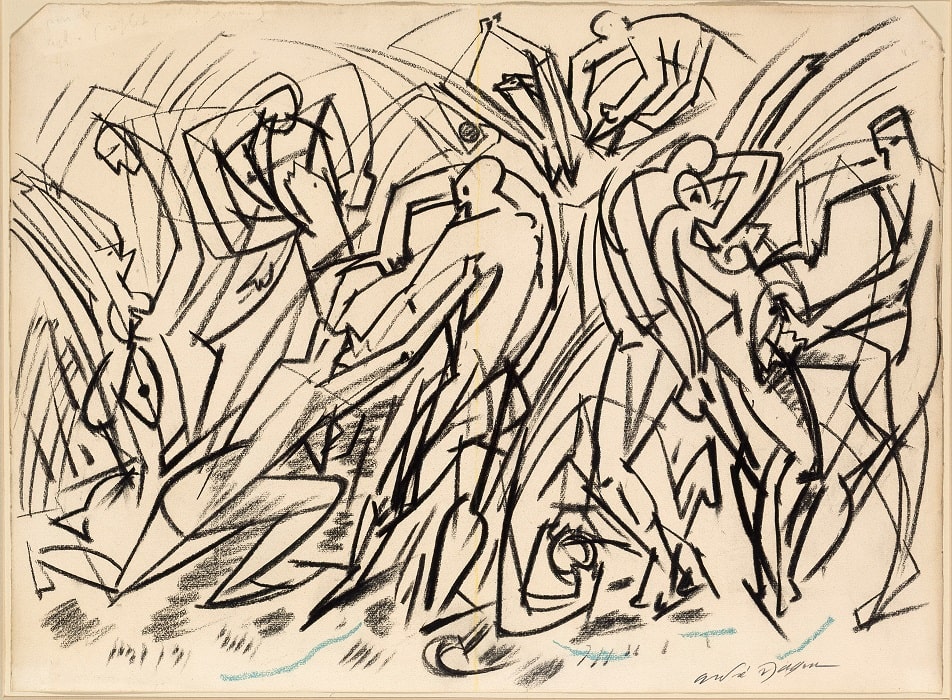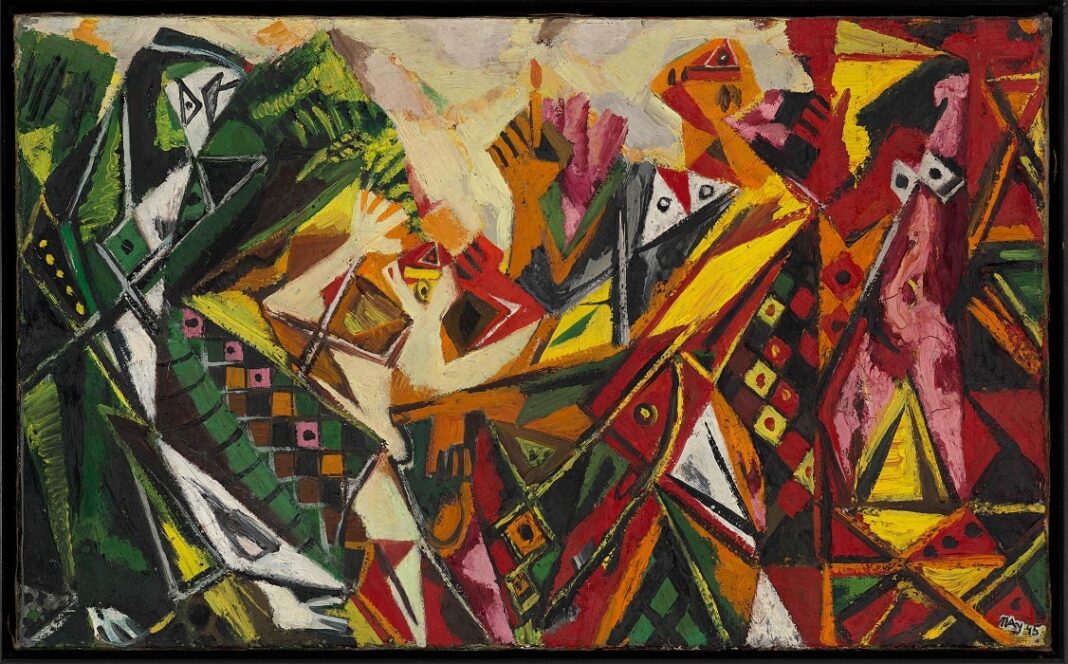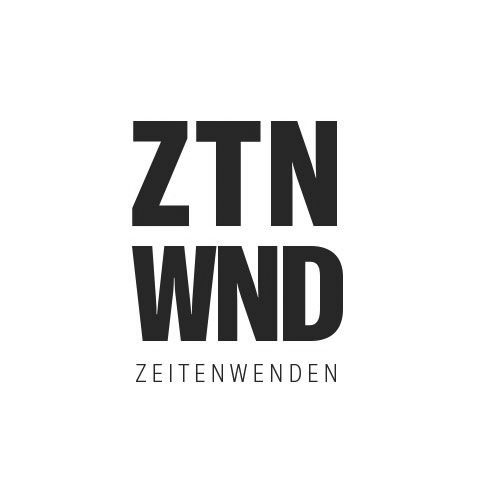The exhibition in the Scharf-Gerstenberg Collection is dedicated for the first time to the artistic relationship between the French surrealist André Masson and the Berlin-based Ernst Wilhelm Nay, whose art became the flagship of abstract modernism in post-war West Germany.
Fig. above: Ernst Wilhelm Nay. The Visit. 1945 – Oil on canvas, 50 x 81 cm, private collection. Photo: Ernst Wilhelm Nay Foundation, Cologne
In 1931, André Masson (1896-1987) created the large-format painting “Massacre”, which is the starting point of the exhibition. One year later, it was published in large format by Christian Zervos in the magazine “Cahiers d’art”. On a formal level, this painting, as well as a number of other paintings and drawings by Masson from the same period, show striking similarities with works by Ernst Wilhelm Nay (1902-1968) from the 1940s. In terms of content, Ernst Wilhelm Nay and André Masson, who never met in person, adopt largely opposing positions: While Masson’s works focus on the memory of the horrors of the First World War, the young soldier Nay creates a mythological counter-world to the catastrophe of the Second World War.

Analytical Cubism developed by Pablo Picasso (1881-1973) and Georges Braque (1882-1963) in 1909-1912 and the “automatic writing” (“écriture automatique”) first propagated by the Surrealists around André Breton in the early 1920s were the models for this new formal language. In the 1940s and 1950s, it was also used by artists such as Asger Jorn (1914-1973), Georg Meistermann (1911-1990) and Theodor Werner (1886-1969).
A total of around 70 works will be on display.
The exhibition is curated by Kyllikki Zacharias, head of the Scharf-Gerstenberg Collection.
Scharf-Gerstenberg
WHERE?
Scharf-Gerstenberg Collection
70 Castle Street
14059 Berlin-Charlottenburg
WHEN?
Friday, 08.12.2023 – Sunday, 28.04.2024
Tuesday – Friday, 10 am – 6 pm
Saturday + Sunday, 11 am – 6 pm






